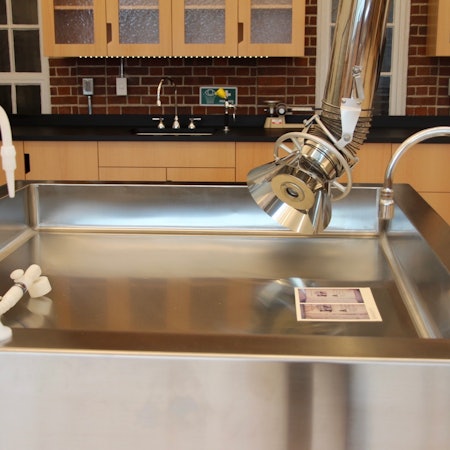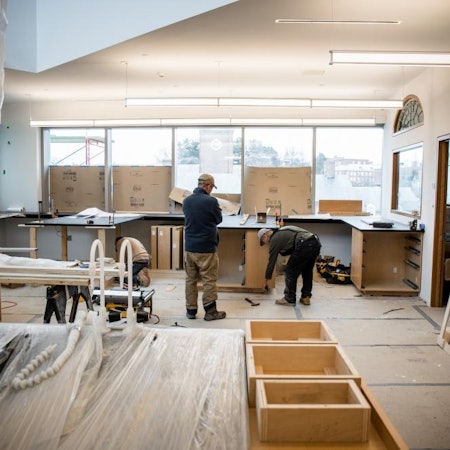Eco Supply provided the American Antiquarian Society with 3/4" Richlite in Black Diamond, that was then stacked to make a 1.25" edge. This approach is an affordable way to give a robust look to Richlite tops while still maintaining the same durability. For more information about the project, please read the excerpt from the Samuel Anderson Architects website, below the photo gallery.
Want to learn more about Richlite?
Click the button below to request a Richlite AIA CES course for your firm:
From Samuel Anderson Architects Website:
The American Antiquarian Society collects and preserves everything printed and published in America from early European settlement through 1876, making the material available both digitally and materially for all manner of research. In addition to a robust local outreach program, the Society sponsors numerous fellowships every year for academics and creative professionals to come study from all over the U.S., thus offering continued support for valuable scholarship and original research.
The expansion provided sorely needed space for public programming, conservation and mechanical equipment, while presenting an open and welcoming face to the public. The new wing allows AAS to expand its programs for K–12 education, visiting scholars, and the general public. The new conservation suite expanded the department’s training and research capabilities, as well as the breadth of its treatments. The renovation provided all new, archive quality climate control throughout 32,000 SF of stacks, and new human comfort with relative humidity control at the reading room. Stack lighting and fire alarm were both upgraded.
It was important that AAS, as a major research institution, remained available to the public during renovations. The project team developed a phasing strategy that allowed staff and collections to remain on-site throughout construction, and almost no days closed, even though the project involved replacing virtually all existing mechanical equipment and duct & pipe infrastructure.


















